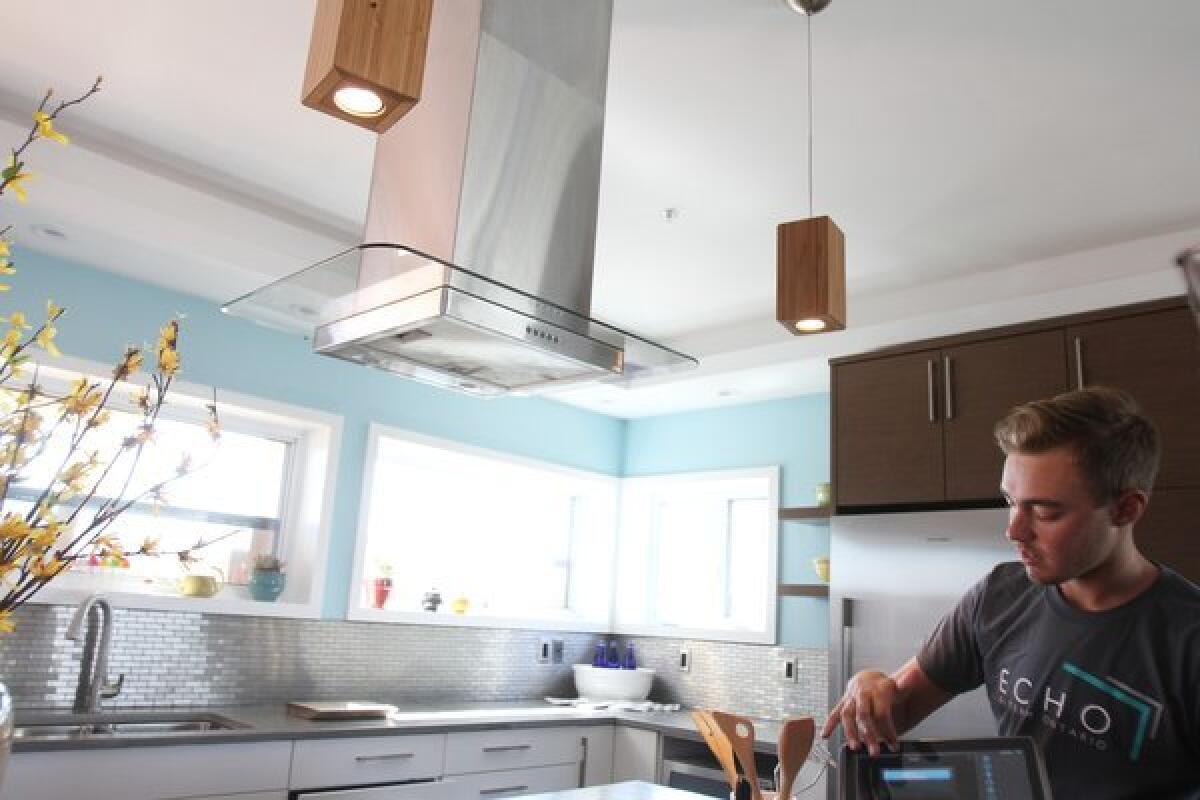Student designs push smart-home technology into the app era

While showing flickers of promise, smart homes -- residences that digitally monitor and regulate energy use and technology in the house -- have yet to take off in the U.S. But at the Solar Decathlon in Irvine, they’re everywhere.
Almost every residence in the U.S. Department of Energy college competition uses some form of the technology, which has evolved quickly in recent years, competition manager Joe Simon said. He was a contestant with the University of Illinois in 2007 and 2009. In those days homes were just starting to monitor power consumption. Now they can control it, automate it and even take charge of other parts of the house, such as appliances. Some can even learn a home owner’s habits to make more adjustments.
“Now ‘smart’ is when the home is making decisions for you,” Simon said.
FULL COVERAGE: Solar Decathlon 2013 main page
The Canadian entry from Team Ontario, ECHO, has a weather station on the roof that essentially orders the house around. If winds kick up, it can shut off the air conditioning, open the windows and open the blinds. The house does have manual controls, but a student-developed mobile app -- also pervasive at the Solar Decathlon this year -- can control lights, windows, heating and even the television.
Ontario students have to use all their programming skills to make the app work seamlessly. There are lots of smart home tech companies now, including Control 4, a company started by Caltech alums who participated in the 2011 decathlon.
But the technology doesn’t always play nice when it comes to compatibility.
The ultra-connected decathlon entry from Arizona State University and the University of New Mexico can monitor and control lighting, temperature, appliances, security and even an electric vehicle; it can shut off devices during peak usage times through a connection with the local energy grid. But the team has to employ five different apps. “Maybe we can help spark a turn toward integration,” team advisor Olga Lavrova said.
West Virginia University’s home coordinates with a digital wristband called Fit Bit to track occupants’ weight, heart rate and sleeping patterns. The idea is to combat obesity in Appalachia. “Sustain your planet, sustain your body,” team member Branden Bellanca said. Perhaps smart technology will morph into caring technology?
Or perhaps the next phase isn’t digital at all. Team Capitol DC’s sunscreens are made of a titanium and nickel alloy that expands and contracts when heated and cooled, so they open and close automatically.
“We put as much research into these screens as we did with the rest of the house,” team member Amanda Stacy said.
ALSO:
Method Homes prefab in Venice: Take a look, inside and out
Paint your own mural, with a little inspiration from Sol LeWitt
Minarc’s mnmMOD prefab rises as affordable housing in South L.A.
JOIN THE CONVERSATION:@latimeshome | pinterest.com/latimeshome | facebook.com/latimeshome | facebook.com/latimesgarden






